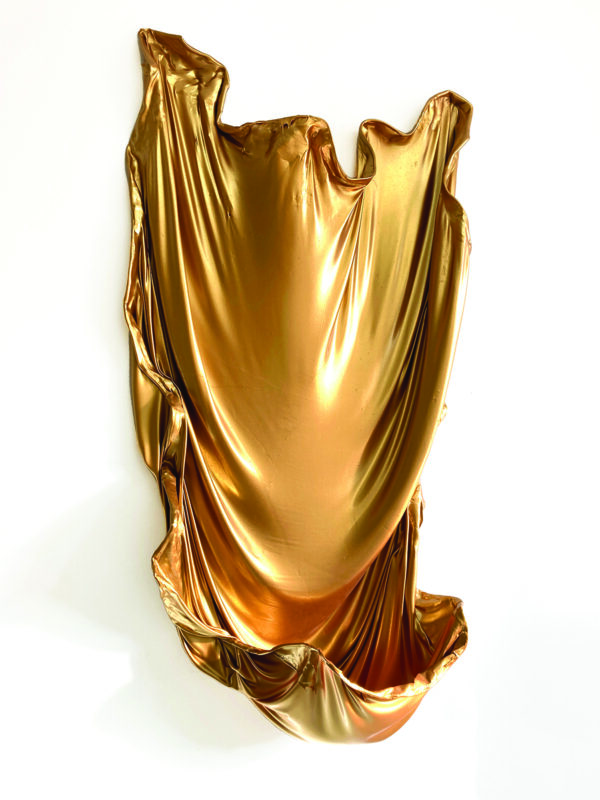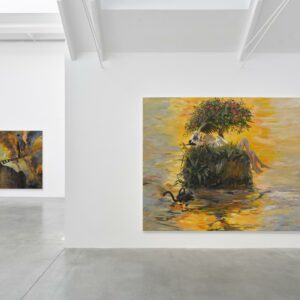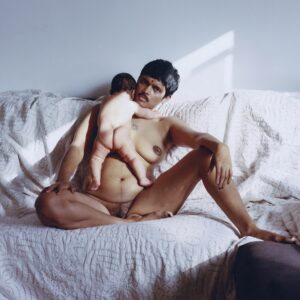In the context of rapid global digitalization, artist Hao Huang explores the coexistence of nature and technology through a unique lens. His latest series of works reimagines the traditional Chinese Taihu stone using 3D printing technology, challenging the boundaries between time, matter, and culture. In these works, Hao not only explores the contemporary translation of natural landscapes but also deeply reflects on the relationship between contemporary consumerism, industrial production, and semiotics. While the surface of the work presents a fusion of nature and technology, it reveals the complex conflict between function and symbolism, the natural and the artificial in modern society.

A Dialogue Between Technology and Nature: Reconstructing Taihu Stones
Hao’s creations draw inspiration from traditional Chinese Taihu stones, renowned for their unique shapes, dynamic cavities, and textures. These stones, sculpted over centuries by nature, have become a significant symbol in classical Chinese gardens, representing the wonder and power of nature. However, in his work, this ancient natural element is imbued with a new, modern meaning. Using 3D printing technology, he reconstructs the Taihu stone, capturing its intricate geometric structures and organic curves. The work is not only an homage to the traditional symbol but also a deep reflection on its contemporary reinterpretation.
Notably, Hao chose not to erase the support structures from the 3D printing process, instead retaining these modern elements in his pieces. This approach blends the natural forms of the Taihu stone with traces of industrial production, giving the work a unique visual tension. The preserved printing supports convey an unfinished industrial feel and remind viewers that these works are, at their core, artificial creations—forms of “nature” accelerated through human technology. This contrast between the natural and the artificial echoes the increasingly blurred boundary between natural landscapes and man-made environments in contemporary society.
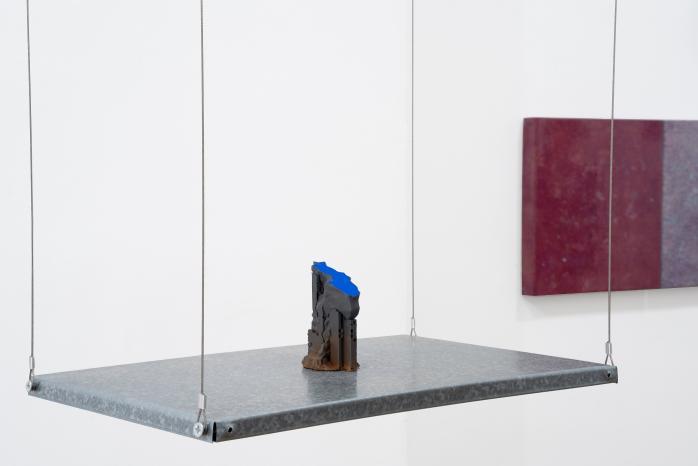

A Dialogue with Time: Accelerated Geological Processes
The use of iron materials in Hao’s work introduces the dimension of time. Iron naturally oxidizes and rusts over time, giving his works the characteristic of natural transformation over time—a compressed geological process, as if the slow weathering of thousands of years is condensed into a single piece. This simulates the natural formation process of Taihu stones while challenging traditional notions of “natural” and “artificial” time scales through the compression and reconstruction of time.
In Hao’s creations, technology acts as an accelerator, enabling a natural process that would normally take hundreds, or even thousands, of years to be completed in a matter of hours through 3D printing. This sense of acceleration reflects his contemplation on the relationship between modern technology and nature: When we reshape nature through technological means, even simulating natural processes, does it mean we have fully controlled nature? Or, is this kind of “nature” still the nature we once understood?
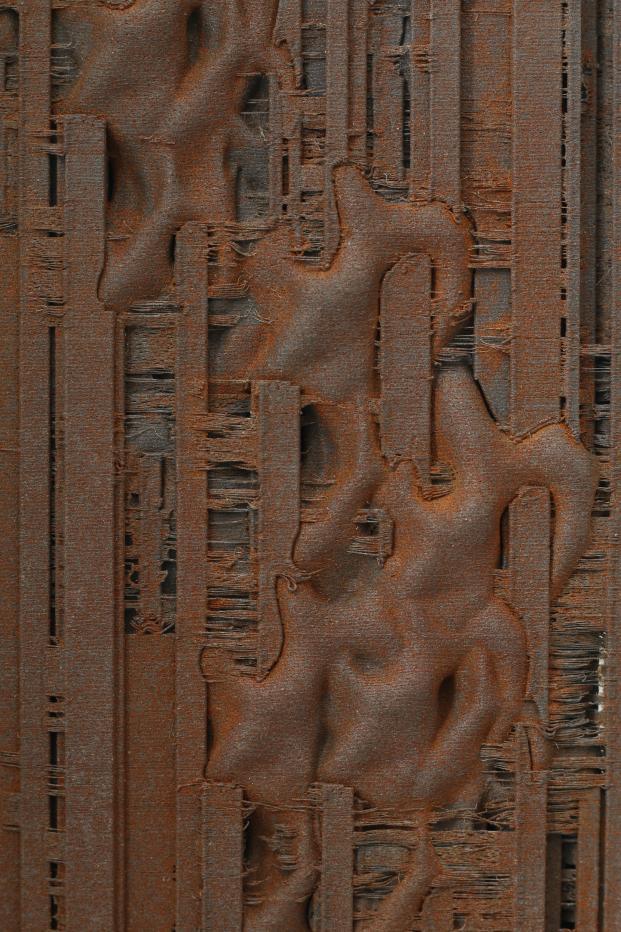
The Interplay of Virtual and Real: Insights from Meta-Geology
Hao situates his works within the framework of “meta-geology.” This concept not only refers to the traditional study of Earth’s history and layers but also explores how digital technology intertwines with geological matter, forming a new layering of landscapes. His works resemble an ever-evolving geological body, representing the merging and reconstruction of digital and material elements in contemporary art. Through 3D printing, he transforms virtual designs into tangible material forms, where information becomes rock. The materialization of data demonstrates the potential of modern technology, mirroring society’s dependence on and fascination with the digital world.
This exploration is not limited to the technological realm. Through repetition and copying, Hao further probes the overflow of information and material in modern society. The repeated forms and symbols, mechanically reproduced through 3D printing, reflect an era of over-consumption of landscapes, materials, and cultural symbols. His works serve as a deep reflection on these cultural phenomena, questioning whether we can still find an authentic connection with nature in this “meta” space.
Cultural Symbols and the Conflict of Contemporary Consumerism
Hao’s works innovate not only in terms of material and form but also raise critiques of consumerism at the level of cultural semiotics. Taihu stones, once an important symbol in ancient Chinese culture, represented a perfect fusion of tranquility, nature, and humanity.
However, in contemporary society, this symbol has been commodified, becoming a product that can be replicated and sold on industrial assembly lines. By copying, pasting, and quickly producing these “Taihu stones,” Hao places them in the context of contemporary consumerism, exploring the dissolution and transformation of symbols in modern society. Through his creations, viewers are invited to reflect: When a symbol representing culture, history, and nature is redefined by industrial and digital tools, does its original meaning still exist? Or has it become a product continually produced and replicated within the modern consumer system, where the separation of symbol and function strips it of its original cultural significance?
False Functionality and Critical Visual Language
In Hao’s works, the functionality of objects is deliberately weakened or made illusory. For instance, the installation on the right side of Figure 3 resembles a functional radio, but in reality, it is just a collection of objects consisting of a power supply and an antenna, devoid of any real function. This deconstructive expression highlights the artist’s skepticism toward contemporary industrial production and consumerism.
Modern society is flooded with products that claim functionality, but their true value is often replaced by constructed consumer demand and symbolic significance. Through the form and materials of his work, Hao transforms what should be functional objects into “material assemblies” without purpose, deconstructing their inherent utility and questioning the logic of consumerism in modern production models.
The power supply and antenna elements in his works, typically associated with modern communication and technology, are deconstructed into an inoperative installation in Hao’s artistic language. Their existence is more about the relationship and tension between materials rather than their functionality. It is this “relationship between objects” that strips these elements of their inherent functional meanings, transforming them into a new visual and philosophical composition. This reveals Hao’s profound skepticism toward existing modes of production and forms of artificial objects.
Conclusion
Hao Huang’s works are not only a contemporary reinterpretation of natural landscapes but also a profound exploration of the interpenetration of the digital and material worlds. By transforming ancient Taihu stones into new digital landscapes, he challenges our traditional understanding of time, matter, and nature. In Hao’s creations, nature is no longer simply the nature we once knew but an evolving hybrid driven by technology—a meta-geological landscape shaped by the combined forces of the digital and material worlds


